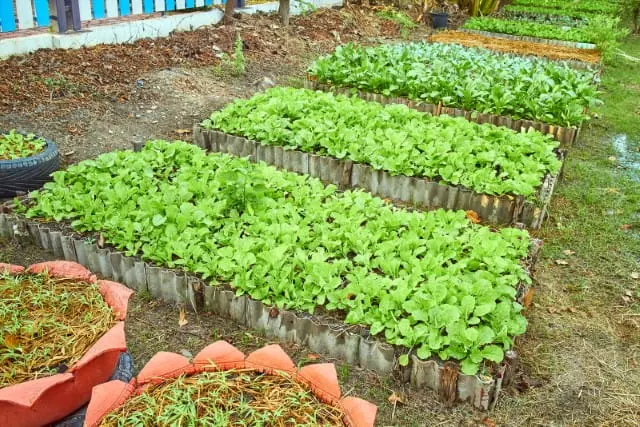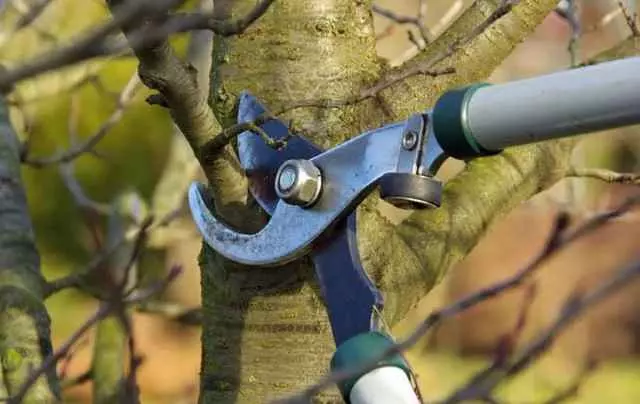The month of January is a great opportunity to attend to our crops even though it is quite cold in some areas. The weather of course varies according to the place where we are, so we must keep in mind what we can plant in January.
To get help in this particular, it is necessary to have at hand a calendar of work in the garden. This way we will be able to make a schedule of activities to develop, taking into consideration those that need our attention immediately.
Based on the experience of the last year, after we have taken stock, we will know exactly what our garden needs to be prepared for and start the planting of the first month of the year on the right foot.
Our chronogram should include maintenance work and at the same time, determine what we will plant in January so that the program continues its course toward the next season.
Taking care of those plants that are in good condition is a good start: prune them, check which plants need compost and finally prepare them to become more robust when the weather changes. It is time to clean the area where they are planted, remove the leaves in bad condition, and place newly fertilized soil. This will allow them to resist the low temperatures and will make them much stronger.
At this time of the year, it is interesting to prepare the soil for the next season, for this you can make use of one of the best motor hoes for vegetable gardens. It is also a good time (throughout the winter) to prepare the compost that you will later use in the garden. To do this you can make a composter or buy one, here you can see a selection of the best composters for the garden.
Table of Contents
What Vegetables Can Be Grown in January?
Contrary to some forecasts, in January despite the low temperatures, you can plant a lot of vegetables that germinate and get stronger as the weather improves (keep in mind that the continental climate of the plateau is not the same as the Mediterranean climate).
Tips For the Vegetable Garden in January
It is clear that although these vegetables and greens are grown in January, precautions for their sowing must be present so that the expected results can be obtained:
- The heated greenhouse is very useful to start the first sowing and the time when spring arrives. Daily ventilation for 2 hours in the morning will help to eliminate excess humidity and the plants will remain in good condition. For example, tomatoes and peppers need heat, so they can be planted inside the greenhouse, and we will see them bear fruit when the sunny days arrive.
- It is important to keep an eye on the watering schedule for these plants. Due to the low temperatures, the excess water could freeze, and it will be ruined.
- Young plants soon after sprouting the seed can be transplanted to the final site waiting for the weather to improve so that they can develop more strongly. In this case, we have winter lettuce, spinach, cabbage in all kinds, and chard, among others.
- It is very healthy to apply the mulching technique, which consists of applying a layer of loose organic matter, such as straw, cut grass, leaves, and other similar materials, which is used to cover the soil surrounding the plants, or placed between the rows of plants to protect the soil, especially during frosts.
What to Plant in January
In that sense, it is advisable to start planting with those crops that are strong and resistant at this time of the year:
Carrot. It is a rustic vegetable that is grown all year round in large spaces and properly conditioned. Planted at depth with organic matter in clay-limestone soils. It leaves a space between 2.7″ and 4″ (7 and 10 cm) between seed and seed. It develops very well in temperate climates. Here we explain how to grow carrots.
The cultivation of the carrot is simple, and germinates quickly as long as the substrate is kept moist without excess water.
Pea. This is one of the most adaptable crops to the climate, especially to frost. However, when the temperature is below 41 °F (5 °C) its growth speed becomes slow. The sowing is done directly to the ground keeping a separation between seed and seed of 6″ (15 cm). The plants should be separated so that they have air.
Parsley. The resistance of this plant is impressive, it develops well in places with mild winters. However, if the temperature drops too much when growing it, it should be covered. Excessive cold causes slow germination and growth. But as the climate changes progressively, it transforms into a robust plant. Here we explain how to grow parsley.
Radish. This crop is ideal for combining with others in the January garden calendar such as eggplant or peas. It does not require much work, and with undemanding soil, sow the seeds at a depth of 0.8″ (2 cm). Keep the substrate constantly moist. Radish grows quickly, its growth cycle is very strong. Here we explain how to grow radish.
Eggplant. The seeds of this vegetable should be germinated in a seedbed for 3 months before sowing either in a pot or directly in the ground. It grows in any growing space. It needs a space between sowing and sowing of at least half a meter because the plant and the fruit are large. Here we explain how to grow eggplant.
The type of January crop will depend on the climate of the area you live in. It is not the same if you live in Florida as if you live in New York, the climates are very different. The University of Florida lists several crops suitable for the month of January in the state of Florida.

Care of Fruit Trees in January
Fruit trees have a specific period for cultivation. The month of January is a time to protect those trees whose process is already in progress. During this month, hazel and almond trees bloom.
The month of January can be used to:
- Prune deciduous fruit trees. That is to say, those trees normally lose their leaves completely in autumn-winter even though they recover them in spring. Among these we have: cherry, plum, fig, mulberry, pear, apple, apricot, persimmon, and peach, as well as those with dry fruit, walnut, chestnut, etc. For pruning, you can use pruning shears or chainsaws.
- Harvest citrus fruit trees such as oranges, lemons, and tangerines.
- It is advisable not to plant fruit trees when temperatures are low.
- Fertilize in early autumn to provide fruit trees with nutritional reserves. This process is recommended through special organic fertilizer for fruit trees.
We recommend our article about when to prune fruit trees. Also, if you use the search engine you will find specific articles about different fruit trees.

What to Plant in January – Tasks and Care
In January, the orchard becomes a processor of activities since we must not only keep in mind the tasks to be developed, but it is the moment to project and plan for the next season: spring.
The protection of the most sensitive plants from wind, heavy rains, and the winter cold is prepared, which is not an easy task. With vegetable seeds, a wide range of vegetables is presented, to be grown in a seedbed protected from the cold and very clearly, to be transplanted in the garden in late winter or early spring. Recommended are celery, zucchini, squash, melon, and cucumber. You can start the tasks to prepare the soil and when it is time to transplant the seedlings, everything will be in perfect condition.
There are also cold-resistant vegetable seedlings that do not need protection, including onions, endive, lettuce, and leeks. I hope that this article about what to plant in January will be very useful and that you will be able to prepare your garden for the next months.
